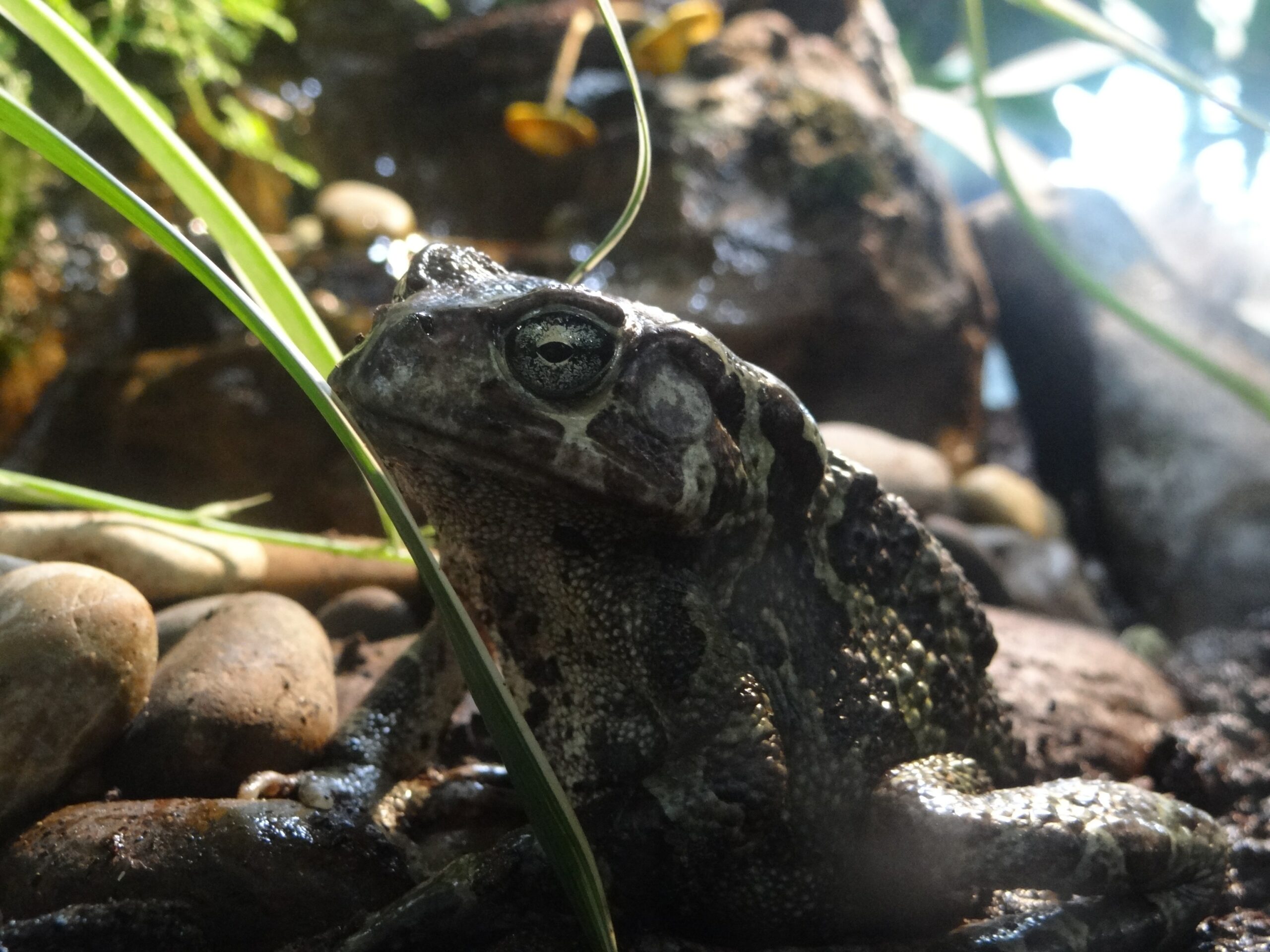Toads are intriguing amphibians that belong to the animal kingdom, class Amphibia, and order Anura. With their distinct appearances and interesting behaviors, toads have captured the curiosity of nature enthusiasts around the world. Some toads are known for their backyard escapades while others are found in more exotic locations and landscapes.
Toads are characterized by their stout bodies, short legs, and dry, bumpy skin. Unlike frogs, the toad typically has drier and more warty skin, which helps them retain moisture in terrestrial environments.
Their skin can come in various colors, including shades of brown, green, and gray, providing effective camouflage. Toads have prominent parotoid glands behind their eyes that secrete toxic substances as a defense mechanism against predators.
One of the most distinctive features of the toad is their ability to produce toxins or poisonous secretions. These toxins, primarily found in the parotoid glands, act as a deterrent to potential predators.
When threatened, a toad may excrete these toxins, irritating or even harming predators. However, it’s important to note that not all toads are highly toxic, and the toxicity levels can vary among species.
Types of Toads
Toads encompass a diverse group of species, with over 600 known species worldwide. Let’s explore some of the most common and popular types of toads:
- American Toad (Anaxyrus americanus): The American toad is native to North America and is known for its distinctive warty skin and a musical trill-like call during the breeding season. It has a range of color variations, from shades of brown to olive green.
- Cane Toad (Rhinella marina): Originally from South and Central America, the cane toad has been introduced to various regions worldwide. It is renowned for its large size and is considered an invasive species in some areas. Cane toads have poisonous skin secretions that can be harmful to predators.
- Colorado River Toad (Incilius alvarius): Also known as the Sonoran Desert toad, the Colorado River toad is found in the southwestern United States and northwestern Mexico. It has a distinctive, plump body and produces potent toxins in its parotoid glands.
- European Common Toad (Bufo bufo): The European common toad is widespread in Europe and parts of Asia. It is a terrestrial species known for its bumpy skin and a slow, waddling gait. During the breeding season, male common toads develop dark-colored “nuptial pads” on their forelimbs.
There are over 600 known species of toads around the world, showcasing their impressive diversity. The most common or popular toads can vary depending on geographical regions and personal preferences.
However, some widely recognized and appreciated toads include the American toad, cane toad, Colorado River toad, and European common toad.
What makes toads unique?
Toads are known for their distinct appearance, including bumpy skin, warty texture, and terrestrial adaptations. Their ability to produce toxic secretions as a defense mechanism sets them apart from other amphibians.
Toads also play important ecological roles, helping to control insect populations and serving as indicators of environmental health.
Summary
Toads are captivating amphibians with their unique characteristics, diverse species, and fascinating life cycles. From their warty skin and toxic secretions to their essential roles in ecosystems, toads provide us with a glimpse into the wonders of the natural world.
By understanding their traits, different types, and ecological significance, we can develop a greater appreciation for these remarkable creatures and their contributions to our planet’s biodiversity.



































































